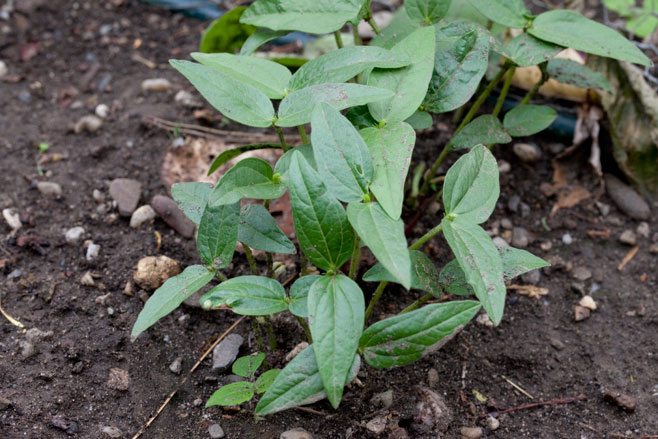|
Cicer arietinum (Chickpea) Life
> eukaryotes >
Archaeoplastida >
Chloroplastida
>
Charophyta > Streptophytina > Plantae (land plants)
> Tracheophyta (vascular plants) > Euphyllophyta > Lignophyta (woody plants)
> Spermatophyta (seed plants) > Angiospermae (flowering
plants) > Eudicotyledons > Core Eudicots > Rosids >
Eurosid I > Fabales > Family: Fabaceae
 |
|
Cicer arietinum, Vienna Botanical Gardens,
Austria. [photo
H.G.
Robertson, Iziko ©] |
Originates from south-eastern Turkey. Wild chickpeas were being harvested
by people 9500 years ago, and by 8500 years ago there is evidence that chickpeas
were being cultivated. The seeds have high levels of protein and are eaten whole
or ground into flour that has a wide variety of uses. Hummus dip is made
from ground up chickpeas and sesame oil.
Chickpea originates from south-eastern Turkey where the
wild subspecies Cicer arietinum reticulatum occurs. With domestication,
there has been a gradual increase in Chickpea seed size from 3.5 mm to 6 mm.
Small Chickpea seeds have been found in archaeological sites dating back to 7500
BC suggesting that people at this time were harvesting them in the wild or
growing undomesticated plants. The earliest evidence of domestication is larger
seeds found in Jericho dating back to 6500 BC. Chickpea therefore joins Pea and
Lentil as one of the three main pulses (i.e. annual legumes grown for seed)
associated in the Near East with the Agricultural Revolution of the Neolithic.
Today it is the third most important commercial pulse in the world although in
southern Africa it is not widely consumed.
Chickpea is now grown mainly around the Mediterranean, in
Ethiopia, and in India, the latter producing 80% of world production. It
is grown in moist soil after the rainy season and the advantages of this crop
are that it does not need irrigation and can be grown in marginal, low fertility
areas. The seeds not only have high levels of protein (c 20 %) but also are rich
in carbohydrates (c 55%) and fats (c 5%), making them a highly nutritious food.
Uses
-
Seeds are eaten whole after being boiled, roasted or
fried.
-
Seeds are ground up into flour that is used, for
instance, to make falafels.
-
The Middle Eastern dip called hummus is made
from cooked, ground up chickpeas and sesame oil.
References
-
Sauer, J.D. 1993. Historical geography of
crop plants - a select roster. CRC Press, Boca Raton, Florida.
-
van Wyk, B.-E. 2005. Food Plants of the World -
Identification, Culinary Uses and Nutritional Value. Briza, Pretoria.
-
Zohary, D. & Hopf, M. 1993. Domestication
of plants in the old World - The origin and spread of cultivated plants in
West Asia, Europe, and the Nile Valley. Clarendon Press, Oxford.
Text by Hamish Robertson |
